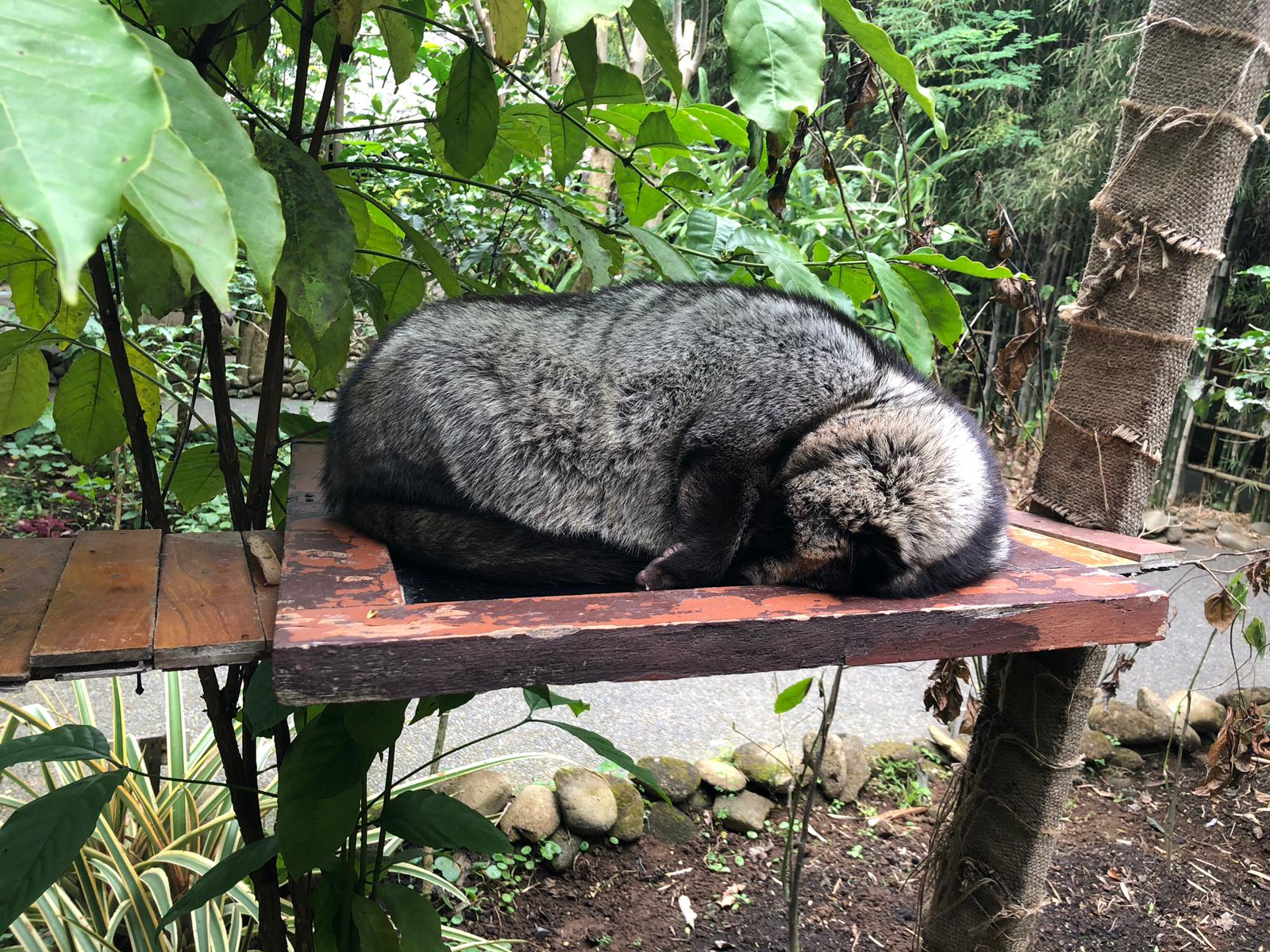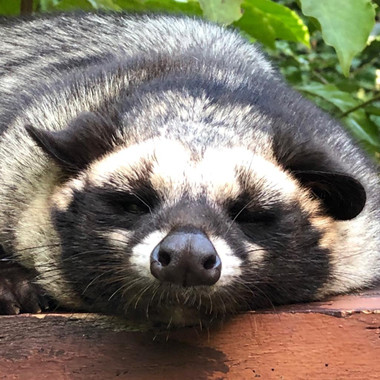What is Civet Coffee?
Posted by Mark Bentham, The Coffee Man on 25th Nov 2019
Civet Coffee, Kopi Luwak, or Luwak Coffee is well known for it’s beautiful high aroma and taste. It is produced in Indonesia, Vietnam and the Phillipenes. Now considered a very controversial coffee choice, we felt we should explain a little about this unusual coffee and hopefully guide our coffee lovers towards a more sustainable customer voice.
It is called Civet, or Luwak Coffee because the coffee beans are processed in a very unusual way, using the animals’ digestive system as a fermenting mechanism.
The Civet Cats, or Luwaks, who look rather like possums, have grayish fur that is a bit shaggy and coarse, the Asian Palm Civet also has three rows of black markings on its body as well as black markings on its ears, feet and muzzle. It can sometimes be mistaken for a cat or weasel of some kind.
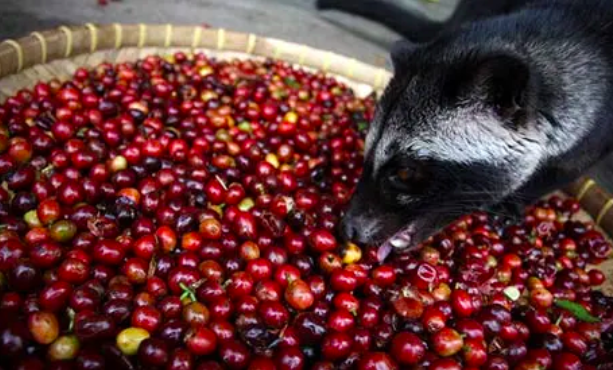
These nocturnal marsupials are fed ripe coffee cherries. The coffee beans pass through the civet’s digestive tract where the outer fruit is mostly digested, and then the beans are then defecated onto the ground. Coffee farmers then collect the coffee beans and wash and sun-dry them.
The Civet produces a unique coffee by eating the ripest beans (in the case of wild Civet Coffee) and then marinating those beans in its digestive tract before expelling them onto the forest floor. A quick wash, sun-drying, and then a light roast, and the beans are ready to go!
When the Civet eats the coffee cherry, the fruit is mostly digested in the Civet’s stomach, but the seed inside (the coffee bean) is not. Research has shown that enzymes in the Civet’s digestive tract cause certain chemical processes to occur on the coffee beans’ surface and also within the porous coffee beans.
Specific proteins that normally give coffee a bitter taste are broken down by the enzymes, resulting in a less bitter coffee and allowing the coffee’s notable highlights to shine through when the coffee is given a light roast.
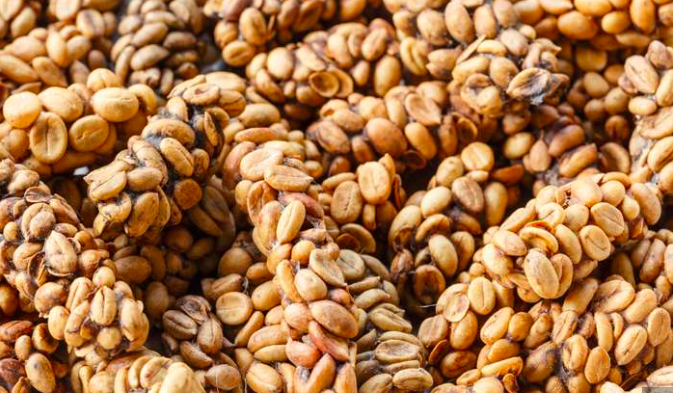
While some people are concerned about Civet Coffee’s potential bacterial contaminants (e.g., E Coli), others claim that Civet Coffee is perfectly safe because the Civet’s stomach enzymes help to eliminate the bacteria, as does the washing, sun-drying, and the high temperature of the roasting.
The Civet’s unique ability to select only perfectly ripe coffee cherry (fruit) to feed upon helps to ensure a consistent high quality of coffee beans.
This natural selection process for the best quality coffee beans is one of the reasons why wild-collected Civet Coffee has such a smooth flavour profile and aroma which may not be the same with farm-raised Civets that are fed coffee beans picked by farmers.
One of the foods in the Civets natural diet is the sap of palm flowers. A sweet liquor made by fermenting this sap is known as toddy. This is why Civets are sometimes called Toddy Cats.
The typical diet of a wild Asian Palm Civet includes various berries and pulpy fruits such as the fruit of ficus and palm tree as well as chiku, mango, and rambutan as well as the sap of palm flowers.When the fruit of coffee trees (the coffee cherry) is available the Asian Palm Civet will eat it. In addition to fruit, the nocturnal omnivore Civets will also eat seeds, insects, and even small mammals.
There is a strong movement in both the coffee and conservation industry to regulate, or even prohibit this farming method that creates extremely expensive coffee. But first, let me explain how such a strange method of coffee processing came about…
History
During the 1970s, Dutch colonies created coffee plantations in the Dutch East
Indies, islands of Sumatra and Java. Most of this coffee planted was Arabica
variety, which at the time came from the Middle Eastern country of Yemen. While
the Dutch inhabited Sumatra and Java, the colonists used native Indonesian
farmers to work the coffee plantations and pick coffee fruits for production.
As a result, Indonesian farmers discovered a new way to enjoy and drink coffee.
The Indonesian farmers soon discovered that the Asian Palm Civet ate the
Arabica coffee fruits and left the coffee beans undigested in their poop. So
what the native farmers did was collect the coffee beans from the poop, cleaned
them, roasted them, and brewed their own coffee.
As more and more Indonesian farmers began to brew Kopi Luwak, also known as Civet
Coffee in other parts of the world. The aroma soon caught the attention of the
Dutch colonists and plantation owners. When this happened, Kopi Luwak quickly
became the favourite coffee drink of choice for both natives and the Dutch colonists.
However, since the process of Kopi Luwak was very time consuming and scarce, Kopi
Luwak became very pricey, thus making it the most expensive coffee in the world
in its time, and it is still today.
The Dark Side of Civet Coffee
This very rare and sought after coffee bean has a dark side though, and while it’s aroma and characteristics are highly desirable, many modern coffee drinkers are reluctant to support the Civet Coffee industry because of the conditions the animals face when in a Civet, or Luwak Coffee Farm.
Civet Coffee is produced in many countries including Indonesia, Vietnam and the Philippines.
Much like geese, who are force fed in order to produce the highly prized foie gras, the civets are not always treated respectfully or with care deserving of an animal. Some farmers produce the coffee by allowing the civet cats to feed on the coffee cherries at night, then collect the fermented beans the next day, with very little impact on the health or happiness of the civet.
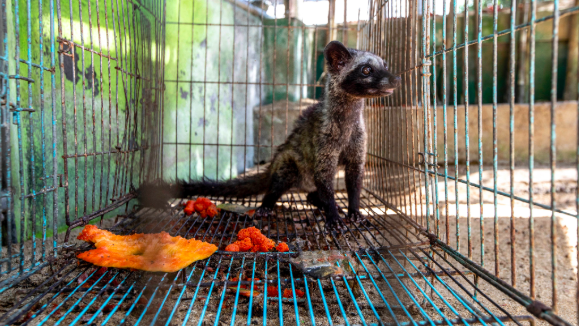
Due to the inflated price tag of this coffee, some farmers choose to keep the civets in cages and force feed them, limiting their life to a small cage and forced feeding of just one type of food.
I have visited Indonesia and seen both types of Civet Coffee farms. I can confidently say, the wild farm is a natural and fairly unconstructed farm with very happy, relaxed Civet cats sleeping in trees and seeming very content. On the other hand, the small cages that are home to the farmed Civets contain very unhappy, unhealthy looking animals and definitely feel wrong.
Wild Civet Conservation Project
Organic, shade-grown coffee is cultivated in in a highland coffee forest in North Luzon in the Cordillera Mountain Range in the Philippines as part of a Civet Conservation Project. Wild Civets feed on the fruit (the coffee cherry) of these trees which are grown organically among the other flora of the region.
The goal of the project is to provide income for local farmers while also helping to preserve the wild Civet population.
This work is occurring on 24 hectares where coffee trees grow within the natural forest of the 40-hectare Julia Campbell Agro-Forest Memorial Park and the wild civets are able to selectively choose just the ripe fruit which improves the quality of the Civet Coffee that is produced by the animals.
The Philippines Civet Conservation Project covers the area in the Cordillera Mountain Range borders the Ifugao Province in North Luzon, an area known for its ancient rice terraces.
In summary, it is worth researching the Civet farm in depth before choosing to buy, drink or support this very rare, but very controversial coffee bean. With environmentalists and conservation teams helping on a world wide scale, the choice of the consumer, as always, is what drives an industry to fail or succeed. Many choose to just avoid this particular type of coffee bean, and instead choose organic, Fairtrade coffee produce.
